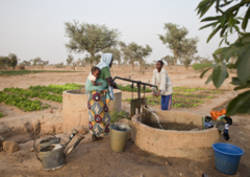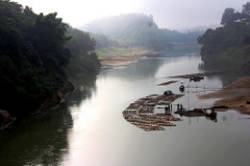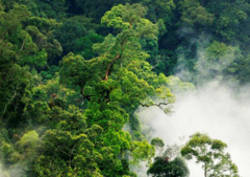How do forests contribute to our water needs?

1. Forested watersheds and wetlands supply a significant proportion of the world’s accessible fresh water for domestic, agricultural, industrial and ecological needs
Forests are a key component of watershed management – an integrated approach of using natural resources in a given geographical area drained by a water course. It is by maintaining and providing high-quality freshwater that watershed areas have a pivotal role in the earth’s ecology and contribute significantly to the wealth and welfare of human societies.

2. About one-third of the world’s largest cities obtain a significant proportion of their drinking water directly from forested protected areas
The populations of major cities such as Mumbai, Bogotá and New York rely on forests for their water supplies. This number will increase as urban centres grow in size and population.

3. Nearly 80 percent of the world’s population – 8 out of 10 people - is exposed to high levels of threat to water security
By 2050, an extra 2.3 billion people are projected to be living in river basins under severe water stress, especially in North and South Africa, and South and Central Asia.

4. Forests act as natural water filters
Forests minimize soil erosion on site, reduce sediment in water bodies (wetlands, ponds, lakes, streams, rivers) and trap or filter water pollutants in the forest litter.

5. Forests minimize soil erosion on site, reduce sediment in water bodies (wetlands, ponds, lakes, streams, rivers) and trap or filter water pollutants in the forest litter.
Forests are at the forefront of reducing the effects of climate change. In respect of water, one benefit is forests’ cooling effect on the environment produced through evapotranspiration and the provision of shade. The impacts of climate change may also be manifested in an increase in catastrophes such as floods, droughts and landslides – all of which may be influenced by forest cover. Moreover, large-scale deforestation can have an impact on precipitation patterns.

6. Improved water resource management can show considerable economic gains
By 2030, the world is projected to face a 40 percent global water deficit under the business-as-usual climate scenario. However, every US$1 invested in watershed protection can save anywhere from US$7.5 to almost US$200 in costs of a new water treatment and filtration facility. In developing countries, a US$15 to US$30 billion investment in improved water resources management could have direct annual income returns in the range of US$60 billion.

7. Forests have a crucial role in building and strengthening resilience
When sustainably managed, forests contribute significantly to reducing soil erosion and the risk of landslides and avalanches, natural disasters which can disrupt the source and supply of freshwater. Forests protect and rehabilitate areas prone to soil degradation and erosion in upland areas.
Forests also reduce the effects of small-scale, frequent or local flooding, and prevent and reduce dryland salinity and desertification. Partial or complete removal of tree cover accelerates water discharge, increasing the risk of floods during the rainy season and drought in the dry season. However, the services provided by ecosystems around the world, particularly wetlands, are in decline. Between US$4.3 and US$20.2 trillion per year of ecosystem services were lost between 1997 and 2011 due to land use change.
